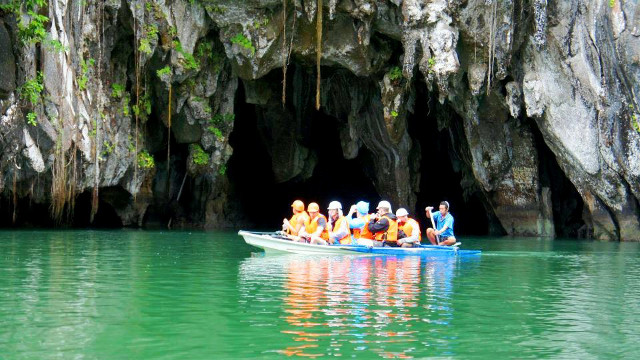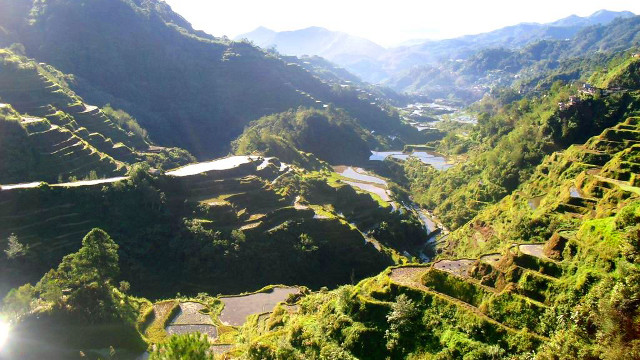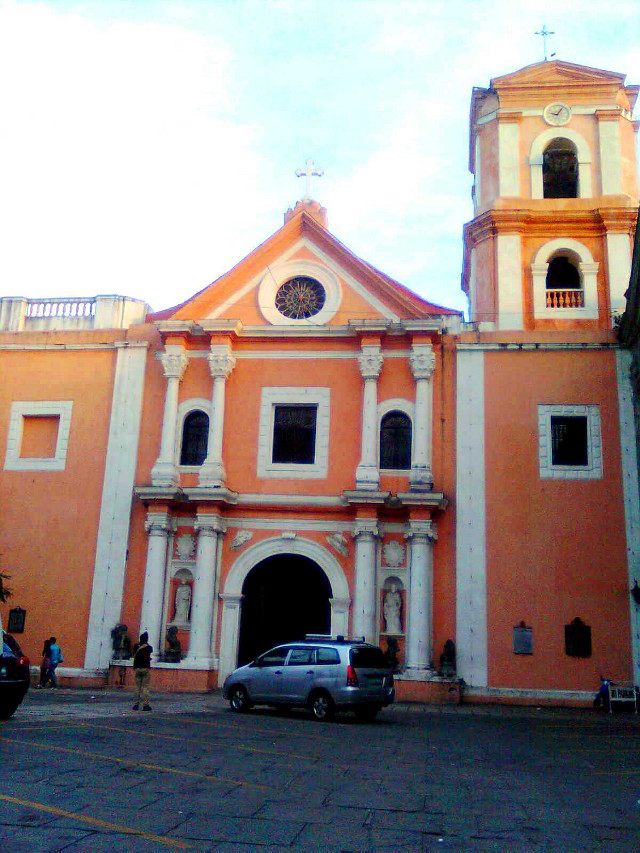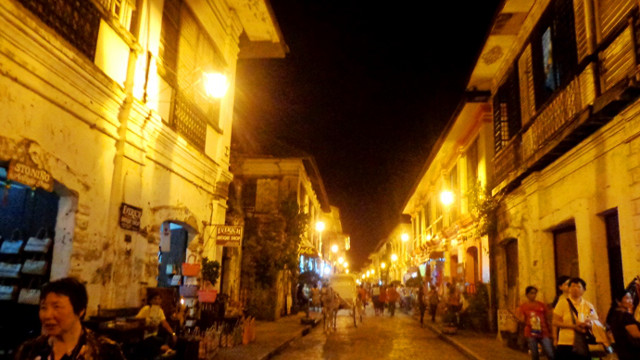SUMMARY
This is AI generated summarization, which may have errors. For context, always refer to the full article.
MANILA, Philippines – The Philippines is recognized by the UNESCO World Heritage Centre for its 8 World Heritage sites; some natural wonders, some man-made marvels. What gives these places World Heritage status, and what makes tourists enthusiastically flock to them?
In celebration of National Heritage Month this May, Rappler explores the beauty of our country’s heritage sites and what makes them worth a visit.
1. Puerto Princesa Subterranean River National Park, Palawan

This park, which has one of the longest underground rivers in the world at 8.2 kilometers, is described by the UNESCO World Heritage website as encompassing “one of the world’s most impressive cave systems, featuring spectacular limestone karst landscapes, pristine natural beauty, and intact old-growth forests and distinctive wildlife.”
The water is also crystal-clear, and the cave formations are majestic. For travel blogger Jherson Jaya, the river tour was quiet and sacred.
“It was a communion with nature, with only the sound of the boat paddle and the guide talking,” he recalls.
Since Puerto Princesa Underground River was recognized as one of the new world’s 7 Wonders of Nature last 2011, advanced booking has become a must. Jaya was almost not able to get a slot because of booking difficulties, but he said it was worth it. So, if you are planning a DIY trip to the river, just make sure you book online ahead of time.
Here is a video with more photos of a typical river tour:
2. Tubbataha Reefs Natural Park, Palawan

Tubbataha Reef is among the top 10 dive sites in the world and is home to an astounding diversity of marine life. It has 600 fish species, over 350 coral species (around half of the world’s coral species), 11 shark species, 13 dolphin and whale species, and more.
Mavic Punay, Programme Officer for Culture of the UNESCO National Commission of the Philippines, calls Tubbataha a “diver’s heaven.”
“Even at shallow waters, a diver can easily be overwhelmed by the beauty of so many colors and life,” Punay, who dived Tubbataha last 2011, said.
“It feels like being in another world — and you’d wonder, too, if you suddenly entered the Disney movie ‘Finding Nemo.’”
Even with the recent damage on the reef, especially of the USS Guardian, this 97,030-hectare Marine Protected Area (MPA) remains a must-visit for scuba divers. Diver and travel blogger Benj Espina explored Tubbataha’s waters just last March and was overwhelmed by Tubbataha’s beauty.
“While diving is always a gamble, the chances of seeing awesome things are definitely higher in Tubbataha due to its remoteness and protected status,” Espina, who has been diving for almost 13 years, said.
“I’ve probably tripled the number of sharks that I’ve seen in my life,” he said in awe, recalling how they swam all around him. While he was not able to see manta rays in his previous dives, he spotted his first, followed by several more, in Tubbataha.
Below is a video showing more of Tubbataha Reef’s marine life:
3. Ifugao Rice Terraces, Cordillera

These vivid green stairways were built 2,000 years ago by indigenous Ifugaos, and are considered by the UNESCO World Heritage Centre as “a living cultural landscape of unparalleled beauty.”
While there are other rice terraces around Asia, what makes the Ifugao terraces particularly special and the Ifugaos admirable are that these terraces were built in higher altitudes and steeper slopes, for a special rice strain germinating in freezing weather. An elaborate farming system ensures that the rice is watered from mountaintop forests.
Jaya, during his visit to the rice terraces, was struck by the “creativity and simple living of the Ifugaos.”
He says he could feel their authenticity in the way they live. So, in visiting these terraces, you not only get to witness their beauty; you also get to know the kind and resourceful people behind them.
Below are some clips on the terraces and the Ifugao people:
4. Vigan City, Ilocos Sur
Walking along Vigan’s cobblestoned streets is not just a journey to the past but also to another world where Philippines meets Europe meets China.
This mix of influences seen in the charming old houses and structures makes it unique, with “no parallel anywhere in East and South-East Asia,” according to the UNESCO World Heritage Centre.
Travel bloggers Endette Mendoza and Kaiye Pallarco’s tip for first-time visitors is this: “The best way to enjoy the scenery is to take a stroll, and marvel at the fine architecture and how it survived earthquakes, typhoons, and World War II.”
They also advised visiting Vigan at night, as the streets are alive with vendors selling local delicacies and souvenirs.
Below is the history and some video clips on Vigan:
5. Baroque churches, Luzon and Visayas
Four Baroque churches in the Philippines are recognized as World Heritage Sites: Immaculate Conception Church (more popularly known as San Agustin Church) in Intramuros, Manila; Nuestra Señora Church in Santa Maria, Ilocos Sur; San Agustin Church in Paoay, Ilocos Norte; and the only one in Visayas–Santo Tomas Church in Miag-ao, Iloilo.
All these churches have a massive, fortress-like appearance, and they were built between the 16th and 18th centuries. The churches in Paoay, Santa Maria, and Miag-ao particularly look gigantic, with their facades a photographer’s dream.
“It looks so grand — you wonder how Filipinos were able to construct it during the Spanish era,” Mendoza says about Paoay Church in particular.

Each church also has distinctive features. Santo Tomas Church in Miag-ao has reliefs of saints and sceneries depicting local life in its façade. Immaculate Conception Church in Manila, meanwhile, has ceiling paintings that look 3D, an optical illusion common in Baroque architecture.
So go and take in the grand, elaborate architecture of our country’s baroque churches, a cultural heritage from both the Philippines and Spain.
Below is more information and clips about these four churches:
– Rappler.com
Add a comment
How does this make you feel?


There are no comments yet. Add your comment to start the conversation.